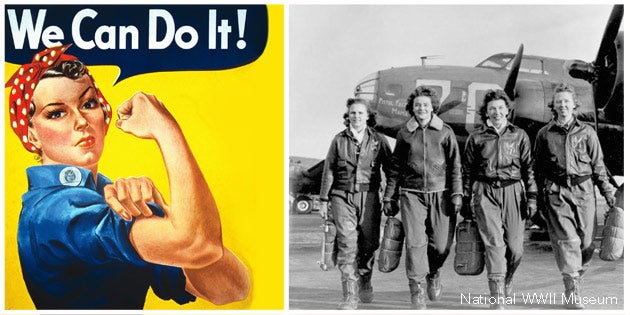March was officially declared Women’s History Month in the U.S. in 1987, but women have been making
history in the States since long before that. Faculty member of the College of Charleston’s Women’s and Gender Studies Program (WGST) Alison Piepmeier shares her thoughts, along with surprising facts about women in history, below.
Although WGST, which offers both a major and a minor, doesn’t commemorate Women’s History Month (Piepmeier contends that women’s history matters each month of the year), the program focuses on past, present and future of women, and it examines gender perceptions, race and disability in the U.S.
“The thing that I and a lot of my colleagues nationwide have been realizing is that this is a program that’s not just about women, but about oppression more broadly recognized,” Piepmeier explains. “The idea of women’s and gender studies is becoming much more inclusive.”
Learn more about the Women’s and Gender Studies Program.
In her studies, Piepmeier has been surprised by many facts and anecdotes she’s observed. From the unexpected to the commonly misconceived, here are a few little-known facts about women in history:
1. A woman invented the windshield wiper.
Mary Anderson, who was born in 1866 in Alabama and who never attended college, invented the windshield wiper in 1903. She secured a patent for her invention but was unable to sell the design before the patent expired.
2. Admiral Grace Murray Hopper was one of the first computer programmers to work on one of the first-ever computers.
Hopper was a pioneer of computer science at at Harvard in 1944. She served in the United States Navy for the majority of her life and is credited for developing many of the building blocks of modern computer programming languages.
3. Stephanie Kwolek invented Kevlar.
She invented it while she worked at the Dupont Company, and she was awarded the company’s Lavoisier Medal for outstanding achievement in 1995 – she remains the only woman to receive that award.
4. Rosa Parks wasn’t tired.
Parks famously refused to give her seat on a full city bus to a white person in Montgomery, Ala., in 1955 (African Americans were required to give up their seats if the bus was full). Her act of defiance fueled the civil rights movement, but despite her bravery, many maintain that Parks was simply too tired to stand. In fact, Piepmeier says, “She was an author and activist in the years before the bus incident. She wasn’t just tired, she was performing with a purpose!”
5. Bra burning was never a hallmark of second-wave feminism.

Painting of Betsy Ross by G. Leibscher.
Second-wave feminism, which took place in the 1960s and ‘70s, often connotes ‘militant’ feminists burning their bras, when, in fact, bra burning (alleged to have taken place at the 1968 Miss America pageant protest) never happened, despite the notion that it was a popular statement of the movement.
6. It’s unlikely that Betsy Ross made the first American flag.
While she was a flag maker during the Revolutionary War, there is virtually no evidence to suggest that Ross was the designer and producer of the first flag.
7. Feminism may not mean what you think it means.
Dictionary.com defines it as: The doctrine advocating social, political, and all other rights of women equal to those of men. To paraphrase, feminism is simply the belief that men and women are equals, and they should have the same rights. This idea was distorted over time, specifically during and after the second-wave feminist movement.
“I hear a lot of people saying, ‘Well I’m not a feminist, but…’” Piepmeier elaborates. “The thing that comes after the ‘but’ is almost always a feminist sentiment. So of course that’s a little hypocritical but that sentiment matters so much more than how it’s labeled. If you don’t want to call it feminism, that’s fine.”
For her part, Piepmeier defines feminism as: “To fight against all forms of oppression that keep people from their full humanity.”
“It’s about making the world a safe place,” Piepmeier says. “It’s more than fighting for women’s rights.”






